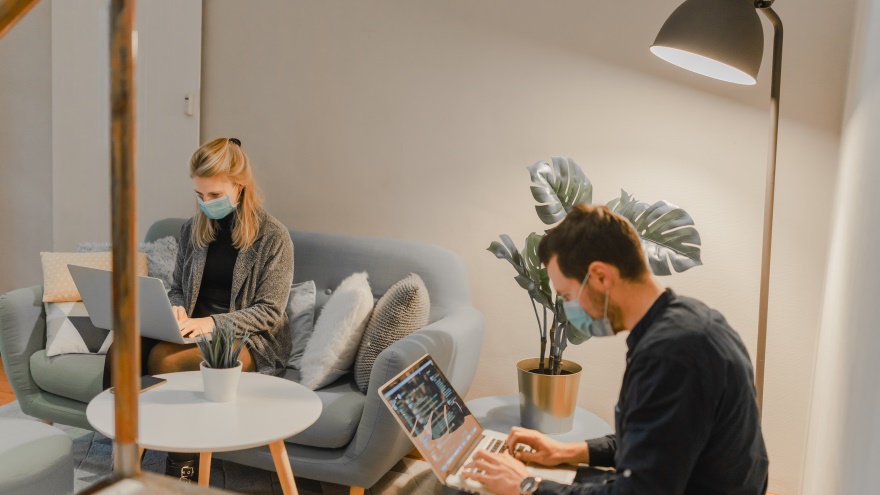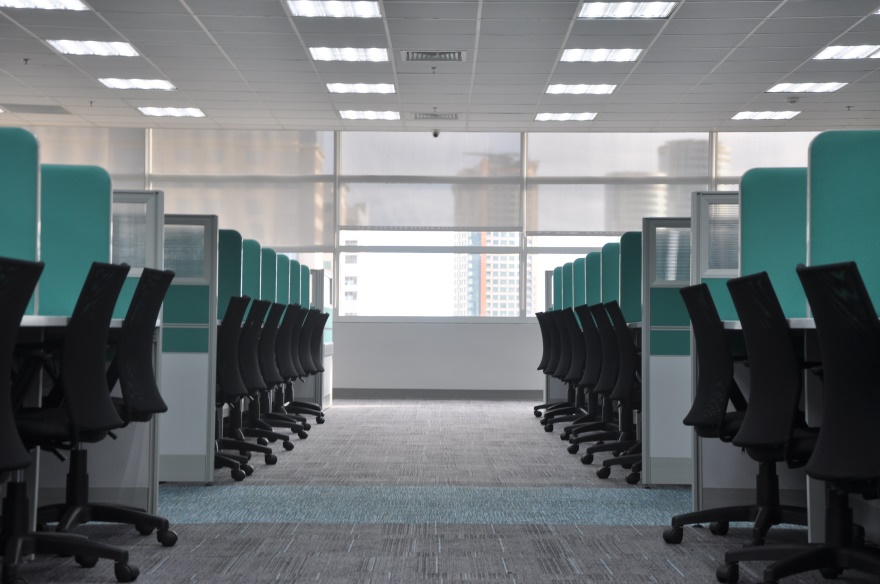Covid-19 forced us to work from home. But as we came out of the pandemic, we realized the value of working together. The shared workplace experience could not be replicated through Zoom meetings.
According to a report, 54% of remote workers would ideally prefer a hybrid work model.
The post-pandemic office is being re-designed keeping in mind the human need to meet face-to-face, socialize and connect but this time with an emphasis on the physical and mental health of employees. Also, organizations are looking to be cost-effective.
In this article, we will look at some of the changes that are happening in the workplace:
Reception
In any office, the reception area is the place that records the highest foot traffic with random interactions taking place. First and foremost, it is essential to have safety measures in place to make sure that the space is clean.
Frequent cleaning of touch points such as tablets, door handles, desks and seating areas with disinfectants will be the order of the day.
Many organizations are redesigning the reception area to make it more spacious so that there are enough empty spaces in-between people seating there.
Some offices are installing visitor management technology in the reception to manage the influx of visitors.
The visitor management system provides a seamless experience through:
- Registering visitors for meetings or ad-hoc visits
- Automatically updating visit details
- Notifying you when your visitor checks-in
- Simplifying the onboarding process for unannounced visitors
- Remembering visitor history
Meeting Rooms & Seating Arrangements
With flexible working gaining popularity, you can be cost-effective if your employees book meeting rooms and desks when they need them and not all the time.
Our simple-to-use web and mobile desk booking system helps your employees locate and book the right desk or meeting room for the work that they have in hand. The system can be accessed through the web, app, tab and more.
Again, after each meeting or when a desk has been released by its occupant, the meeting room and the desk space are sanitized by the housekeeping department.
Many offices are practising safe distancing so that their employees can sit together keeping a safe distance between desks.
Instead of cubicle partitions, we are seeing hanging horticulture or live plants acting as natural boundaries in offices. This positively affects the mental health of workers.
Limiting Wastage of Energy
No longer are HVAC systems and lights running for the whole day like before.
In the post-pandemic office, when an employee books an office space, the booking management system communicates with the Building Automation System (BAS) to switch on and off the electrical devices in that particular space.
So this means that the whole office space doesn’t need to be lit or cooled for the whole day. Instead, the lights and the Air con will switch on automatically when the booking starts and switch off again when the booking ends.
If the employee doesn’t use the office space in spite of booking it, no problem! There are heat and camera censors that will Inform BAS that the room has not been occupied and BAS will switch off the lights and the AC after some time. This limits the wastage of energy in the office.
Closing Thoughts
The office needs to offer plenty of variety to support all kinds of work—from focusing and concentrating to learning, networking and collaborating. And of course, the post-pandemic office must be cost-effective as well.
So, go ahead and redesign your office space keeping these points in mind.
Cheers!




